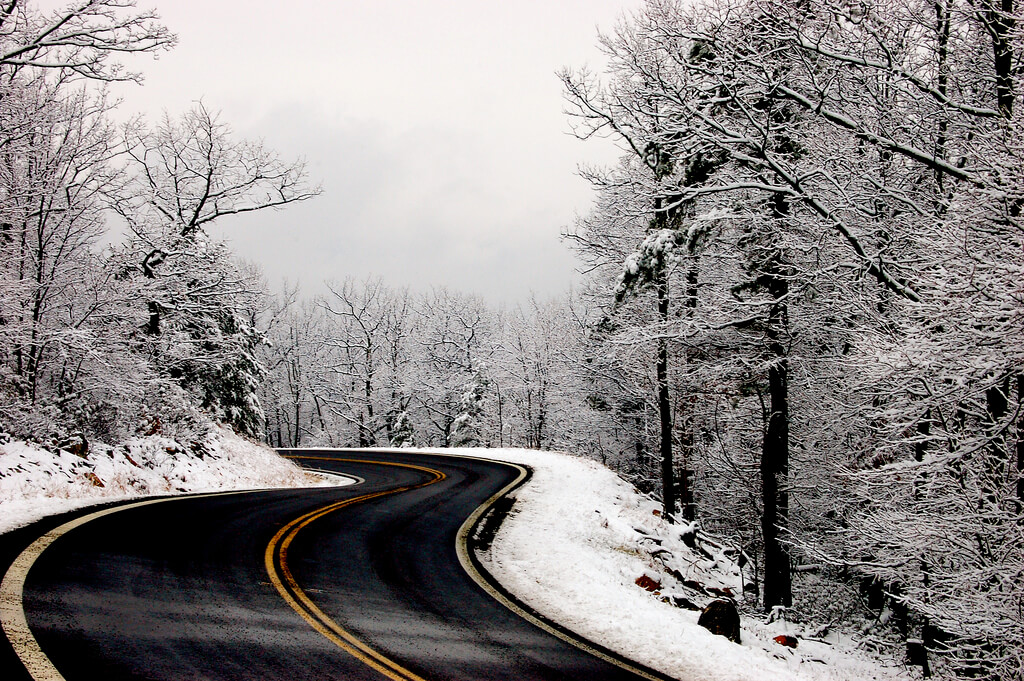One of the joys of the trucking business is the ability to travel across the country and experience the beauty of different roads from coast to coast. However, this also means you must prepare for various types of driving conditions. The winter months make for treacherous road conditions across much of the country with heightened risks to be aware of. Here are some good practices to keep you and your cargo safe in the winter months.
Practice Proper Vehicle Maintenance. Inspect your vehicle before you get on the road.
- Be sure your battery is in good shape, as cold weather lowers battery power.
- For fifth wheel lubrication, make sure you are using a winter-grade product – summer-grade lubricant in low temperatures could cause steering issues.
- Use proper winter coolant in your radiator and make sure there are no leaks.
- Check to make sure the heater, defroster and wiper blades are all in proper working order.
- Check your tires, as decent tread depth is critical.
Be Prepared with Equipment and Supplies. Just as important as vehicle maintenance is having the right gear to get you through the most severe winter conditions.
- Some states require trucks to carry chains or cables during certain months, and they may mandate which axle(s) require chaining and the use of specific traction devices. Make sure you know the laws in the states where you are traveling before you travel out.
- Know your state’s regulations on buying additives for fuel and know if your vehicle has fuel tank heaters. To prevent gelling, keep your tank as full as possible in cold conditions, avoid turning the truck off for long periods, monitor the temperature and wind chill carefully, and beware of fuel purchased in southern states if you are traveling into cold conditions.
- Always carry a winter driving kit with you.
- Flashlight and batteries
- Blankets
- Extra clothing, such as warm layers, gloves, shoes, socks and rain gear
- Non-perishable food and water
- First aid kit
- Bag of sand or salt
- Extra washer fluid
- Windshield scraper and brush
- Jumper cables
- Tire chains or traction mats
- Cellphone and charger
- Lighter, matches and candles
Know the Road Conditions. Have a good source for weather reports and a good thermometer. If your truck is not equipped with either of these, seriously consider the investment, as both are crucial to determining the safest routes and knowing what kinds of road conditions you are dealing with.
React Properly When Things Go Wrong. Whether it is your fault or not, things can – and will – go wrong when driving in dangerous winter conditions.
- Frozen Brakes: If it gets cold enough, the brake lining could freeze to the drum if you set your brakes when they are still wet. To fix this, you will have to break them loose by either backing up so they will break free on their own or hitting them with a hammer to loosen them.
- Skidding: If you find yourself skidding, quickly depress the clutch, look at the left mirror only and steer to get back in line with the trailer. Keep steering and counter-steering until you regain control, but do not over-steer. If possible, avoid braking during this process even if there is an oncoming emergency. There is likely not enough room to stop without a collision, and you could easily make matters worse by slamming on the brakes. Avoid skidding altogether by not braking, turning, steering or accelerating too quickly.
- Jack-knifing: Countless studies show if you allow the tractor and trailer to be at more than a 15-degree angle to each other, your chances of regaining control are unlikely. However, you should still work to correct the jack-knife as soon as you recognize what is happening. Recover by steering until the trailer and tractor are realigned. Never use the brakes, but if you are experiencing a trailer jack-knife (the wheels of the trailer are locked up as opposed to those of the tractor), you should use the accelerator to pull the trailer back in line.
Think ahead about safety, be prepared and know your own limitations. If you feel uncomfortable or unsafe driving in the given conditions, do not drive. It’s better to be safe than sorry.








